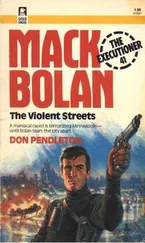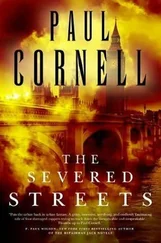The prosecutor pauses.
“… with a snap on it.”
By now, even the juror in the front row-the one who had Doan worried at the beginning of the trial-is nodding in agreement.
“Ladies and gentlemen, after seeing and listening to Romaine Jackson and then hearing that description from a woman who is doing her very best to help this defendant, can there be any question that the person that Romaine Jackson says she saw is the defendant?”
A helluva connect, thinks Garvey, as Doan moves on through the rest of the evidence, urging the jury to use common sense. “When you put it all together, that jigsaw puzzle we talked about will be clear. You will clearly see that this man-”
Doan wheels and points at the defense table.
“-despite all his protestations to the contrary is the man who brutally murdered Charlene Lucas in the early morning hours of February 22, 1988.”
Polansky responds with his strongest stuff, listing the state’s evidence on a nearby drawing board and then crossing off each item as he tries to explain away the circumstances. He does his best to knock down Romaine Jackson and to resurrect Vincent Booker as the logical alternative. He steers clear, however, of Sharon Henson.
In his final response to the jury, Larry Doan actually has the temerity to go to Polansky’s drawing board and begin writing his own comments above his opponent’s visual aid.
“Objection, your honor,” says Polansky, tired and angry. “I would appreciate it if Mr. Doan wrote on his own board.”
Doan shrugs with feigned embarrassment. The jury laughs.
“Overruled,” says Gordy.
Polansky shakes his head; he knows the game is up. And no one is surprised when, only two hours after arguments, the courtroom is reconvened and the jurors file back into the box.
“Mr. Foreman, please stand,” says the clerk. “How do you find the defendant Robert Frazier in indictment number 18809625 as to murder in the first degree, not guilty or guilty?”
“Guilty,” says the foreman.
In the gallery, only the Lucas family reacts. Garvey stares blankly as the jury is polled. Doan shoots a look at Polansky, but the defense attorney continues to take notes. Robert Frazier stares straight ahead.
In the third-floor corridor ten minutes later, Jackie Lucas, the younger daughter, finds Garvey and wraps her arm around his shoulder.
Garvey is momentarily surprised. There are occasions like this, moments when the survivors and the detectives share whatever kind of belated victory comes from a courtroom. Too often, however, the family doesn’t even show for court, or if they do, they regard the defendant and the authorities with equal shares of contempt.
“We did it,” says Jackie Lucas, kissing Garvey lightly on the cheek.
“Yes, we did,” says Garvey, laughing.
“He’s going to the Pen, right?”
“Oh yeah,” he says. “Gordy’ll hammer him.”
Doan follows the family out of the court, and Garvey and Dave Brown both congratulate him again on the closing argument. Writing on Polansky’s board, he tells Doan, that was a nice touch.
“You liked that?” says Doan.
“Oh yeah,” says Garvey, laughing. “That was real class.”
Their voices rattle down the corridor as the highlights are told and retold. For the first time, Garvey and Brown are given a full account of the disaster that befell Sharon Henson. They are laughing loudly when Robert Frazier enters the corridor, his hands cuffed behind him, two sheriff ’s deputies trailing behind.
“Shhhhh,” says Brown. “The man of the hour.”
“Are we ready for the ceremonial eyefuck?” asks Garvey. “I definitely think we’ve earned it.”
Brown nods in agreement.
Larry Doan shakes his head, then walks quietly to the stairwell and up to his office. The detectives wait a few more seconds as Frazier and the deputies approach. Slowly, silently, the defendant passes them with his head down, his hands gripping a stack of rolled-up court papers behind him. There is no eye contact. There are no angry words.
“Fuck it,” says Garvey, grabbing his briefcase from the hallway bench. “He was no fun at all.”
FRIDAY, OCTOBER 21
Once more across the same stale ground, once more into the breach. Once more into the gaping maw of that alley, that hellacious piece of pavement that had never done right by him in the past.
Tom Pellegrini parks the car on Newington, then walks down a cross alley cluttered with garbage and dead leaves. Fall has changed the rear of Newington Avenue again, making it seem a little more as it should be. To Pellegrini, the alley only looks right in colder weather-the bleak and pale vision to which he had grown accustomed months ago. The seasons shouldn’t change in this alley, he thinks. Nothing should change until I know what happened here.
Pellegrini walks down the common alley and through the gate at the rear of 718 Newington. He stands where the body had been, looking yet again at the back of the house, at the kitchen door and the window frame and the metal fire stair running down from the roof.
Red-orange. Red-orange.
The colors of the day. Pellegrini checks the wood trim on the rear of the house carefully, looking for something, anything, that can be called red-orange.
Nothing.
Looking over the chain-link fence, Pellegrini scans the house next door. The yard of 716 Newington is empty now; Andrew and his shitbrown Lincoln are both long gone, the latter permanently repossessed by the finance company, the former tossed out of the house by his long-suffering churchwoman of a wife.
Red-orange. Red-orange.
The back door of 716 is painted red, about the right shade, too. Pellegrini crosses over to the adjacent yard for a closer look. Yes, indeed. Red paint is the outer coat, with orange paint underneath.
Sonofabitch, thinks Pellegrini, scraping a sample off the door. The combination of the red and orange together is distinctive enough for the detective to believe he’s found a match. Eight months after his original interrogation, Andrew is suddenly back in the running, and no one is more surprised than Pellegrini.
If not for the paint on the back door of 716 Newington, the detective wouldn’t believe it. Andrew is a piece of work, to be sure, and Jay Landsman’s original theory about the Lincoln being used to store the body had its merits. But there is nothing on Andrew’s sheet that screams sex offender, nor had their lengthy interrogation of the man produced any doubts. For his part, Pellegrini had gone soft on Andrew as soon as the trunk of the Lincoln had come up clean. And later, when Andrew passed a state police polygraph on his statement, Pellegrini had all but put the man out of his mind. But the red-orange chip was physical evidence and somehow had to be explained. On that basis alone, Andrew was back onstage.
The paint chip was new, a belated bit of evidence that might have seemed comical to Pellegrini if the circumstances hadn’t been so utterly aggravating. The damn thing had been down there in the evidence control unit since day one of the investigation, and it would still be down there if he and Landsman hadn’t gone down to look over the collection of evidence one last time.
The trip downstairs had been routine. For weeks, Pellegrini had been reviewing the Latonya Wallace case file and the existing evidence, trying to come up with something new. Initially, Pellegrini hoped to find something that would lead to a fresh suspect, something that had been overlooked the first and second times through the file. Then, after the chemical analysis of the smudges on the little girl’s pants had been tenuously linked to the Fish Man’s burned-out store, Pellegrini had returned to the existing evidence in the more concrete hope that something else would link the store owner to the murder.
Читать дальше












